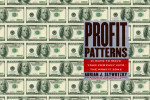Pricing: The third business skill

Pricing is a critical business capability but is often overlooked and poorly organized. Bringing pricing to the forefront as its own discipline and organization role enables businesses to grow and effectively capture value. Effective pricing requires an integrated approach and a recognition of its creative nature.
Pricing: The Third Business Skill: Principles of Price Management by Ernst-Jan Bouter
Pricing: The Third Business Skill is divided into thee sections: The Art of Pricing, The Science of Pricing, and The Execution of Pricing. The first section contains a catalog of 12 price drivers which are selected and combined based on business goals and context–there is no formula for selecting these drivers. The list of 12 drivers and mini-case studies are a good overview of pricing options and will get you thinking about alternative approaches. In contrast to the art of pricing, there is a science to implementing pricing. Pricing managers must put into place processes to gather information, measure outcomes, and validate goals. In the Science of Pricing section you’ll find the keys to implementing pricing management across your company.
The two types of entrepreneurs
There are two types of entrepreneurs: the inventor and the salesperson. The inventor creates new products and services. The salesperson brings the new offering to market. Turning ideas into reality is the realm of invention. Selling anything to anyone is the critical complementary skill. However, these two skills leave out a critical component of business: pricing.
The third business skill enables entrepreneurs and CEOs to realize growth and make the most of their company’s potential.
An often neglected aspect of business is pricing. It is often distributed among many individuals and can be an afterthought, but pricing is “indispensable for sustained success.”
Organization of the pricing function is barely explicit and almost always suboptimal.
When the pricing function is spread haphazardly across the company, pricing decisions are made without context and result in lower profits. Conversely, a thoughtful approach to pricing can have significant positive financial results.
Common pricing approaches
Bouter discusses two of the most common pricing approaches as a first step towards defining the pricing function. Later in the book he notes that selecting the pricing type is an art as it is tied closely to overall business strategy and go to market approach.
Cost-Plus
Cost-plus pricing is appealing as a straightforward method for determining a price.
price = (total costs/sales volume) * (1 + % markup)
Cost-plus appears to be simple, fair, and prudent. It’s thought to be simple because of the basic formula above, fair because a fixed percentage is used to determine profit, and prudent because cost recovery seems always guaranteed.
The simplicity of cost-plus pricing masks market supply and demand with a sales volume forecast, making it opaque. Likewise, the formulaic nature of this approach fails to take into account willingness to pay, competitive pressures, or product/service value.
Fairness is a subjective evaluation as the flat price that is charged to all customers can itself be unfair because it can keep valuable products and services out of reach of those who cannot pay the price. Variable prices in time and across customer groups can allocate products and services in a more equitable way.
Rather than being prudent, cost-plus pricing can lead to a reckless result: severe discounts which snowball and erode product and service value. Unless sales forecasts are correct, which they are usually not, the price charged will be unable to meet profit projections. A price which is set too high due to an incorrect prediction of sales will result in a discounting habit that will train customers to continually demand lower prices.
Finally, total costs, sales volume, and markup are highly subjective, but masquerade as objectively known amounts. This undermines the whole approach because each factor is so variable and rarely completely understood.
Competitive pricing
Competitive or me-too pricing is a form of laziness. “Price” is often quoted as the reason for losing business. But in most cases, there is significant lack of insight into the needs of the customer and the actual weight of the price in customers’ acquisition decisions.
Competitive pricing is a compelling approach because it asserts that customers will seek the lowest price available when choosing between similar offerings. However, price is most likely not the only thing that differentiates you from your competitors. Like cost-plus pricing, competitive pricing can easily lead to a death-spiral of cost cutting due to competitors seeking to match each other’s price decreases.
An integrated pricing approach
Both cost-plus and competitive pricing suffer from a myopic view of the process. Fundamentally, cost is not the only driver of prices and you cannot win by simply looking to your competitors for pricing advice.
Bouter gives many examples of how information about costs and demand can be inaccurately stated, recorded, and acted upon. The critical information flow about pricing must be repeatable, transparent and fast in order to support responsive and effective pricing.
Pricing as a creative process
…the optimum price in an absolute sense does not exist. Pricing is a creative process, regardless of the fact that it involves countless seemingly objective calculations…
There are a multitude of attributes which can be used creative to set prices: different prices for different customers, different prices based on timing of purchase, pricing can be set by any number of units of measure.
Price drivers
The core of the book consists of twelve pricing drivers in four focus areas which are used to create a revenue model. Price can support any number of these goals.
Performance
Company profitability is an important price driver, but not the only one. Price can directly impact profit, but the authors warn against pinning the entirety of your pricing approach on profitability. Price can also help achieve a key company strategy: cost leadership, market share, and niche leadership. Anchoring to one of these broad strategic goals can help align your pricing approach.
Transaction
Transaction based pricing approaches focus on the unit of value rather than the sticker price. Ideally, a business will know what value their customers place on a product or service. Pricing at or below that value would ensure that customers will purchase your offering. Customer value is subjective, difficult to ascertain, and changes over time and in different contexts. Customer value can be considered to consist of several value drivers which are attributes that customers assign to products and services. Further, perceived value can be thought of as a reference value for the category plus differentiation value for the individual offering. Value-based pricing is complex and relies on combining value from product development, with effective communication of that value through marketing programs, and pricing.
The competitive field defines the reference value of products and services. Understanding value drivers and prices relative to your competition is important when using a primarily competitive pricing strategy. Likewise, knowing your target market is essential. Assuming good competitive intelligence, pricing can be very effective when comparing price-to-value ratios against competitors.
Price can be customized according to several parameters including customer type, purchase process (location, timing), versions/tiers of a product or service, and volume. Setting different prices for different customers can capture more revenue and profit by allowing customers to self-select into price tiers. Recognizing that different people place different values on the same offering is a key to successful pricing.
It is not the role of costs to help define the selling price, as happens in cost-plus pricing. Costs form a constraint: they are the lower limit for pricing.
Effective pricing based on costs needs to consider avoidable variable costs, alternative costs, and future-oriented costs. The example given in the book for avoidable alternative costs are airlines which sell seats to both business and casual travelers. Casual travelers can fill empty seats because they are looking for good deals (super saver fares). Since revenue from business travelers covers non-avoidable costs, remaining seats are associated with low variable costs and are therefore attractive for lower prices. Alternative costs occur in situations when one category of customer, like business customers on airlines, purchase products and services for prices lower than they would ordinarily pay, as in the case of vacation super saver tickets. Many companies guard against this by “fencing” each price category with added value items like change fees and other amenities. Finally, rather than simply considering historical costs, effective price management takes into account costs as they will be in the future to prepare for the financial situation the product or service will exist in.
Bouter explains that pricing should drive the product development and marketing processes. Instead of building a product, marketing it broadly, and then setting prices, companies should start with a cost/price goal and develop a product to fit the profile with marketing aimed at the defined customer segments.
Communication
The way in which price is communicated will determine people’s impressions of their options.
Perception of price is a subjective and often irrational process. Many techniques, such as ending in a 9, are used to psychologically influence buyers. Rather than depicting a single discount, using a “discount on top of discount” strategy will make a discount appear even larger than it is. Similarly, price/quantity combinations that make quick mental unit cost calculations difficult can be used to guide consumers to specific product configurations. Good/better/best pricing often works well because the “best” price is the anchor which sets the ceiling for value, while the “good” price allows competition with other vendors, leaving “better” as the seemingly safest bet.
Although explicit price collusion is illegal, suppliers within a market will often settle on a particular price because they all find it works well in practice. There is a leveling effect which causes prices of similar goods to be in a very tight range.
Bouter argues for the benefits of price complexity reduction and gives Apple (simple product line and pricing) vs Dell (multiple tiers within product lines) as an example of simplicity and complexity.
Relationship
Business relationships are key to pricing dynamics. Cross-selling involves offering existing customers complementary or related products, balancing pricing and revenue for each offering. Co-selling can involve partners or a platform in which one participant subsidizes another.
To create an effective pricing model requires what Bouter calls “cohesion”–essentially a combination of the previous eleven pricing drivers.
The first part of the book illustrates the various types of pricing that can be selected based on corporate strategy and market environment. Once a pricing type is selected, the price itself can be determined with a number of qualitative and quantitative tools which are described in the second half of the book. The pricing model sections of Pricing: The Third Business Skill provide a framework and inventory of available pricing models from which to choose.
Evaluate the twelve pricing drivers against your business goals before diving into the details of selecting an optimal price. Bouter also includes a lot of diagnostics and tips for implementing the pricing function in your company–much of the book is dedicated to describing how to run an effective pricing process.






